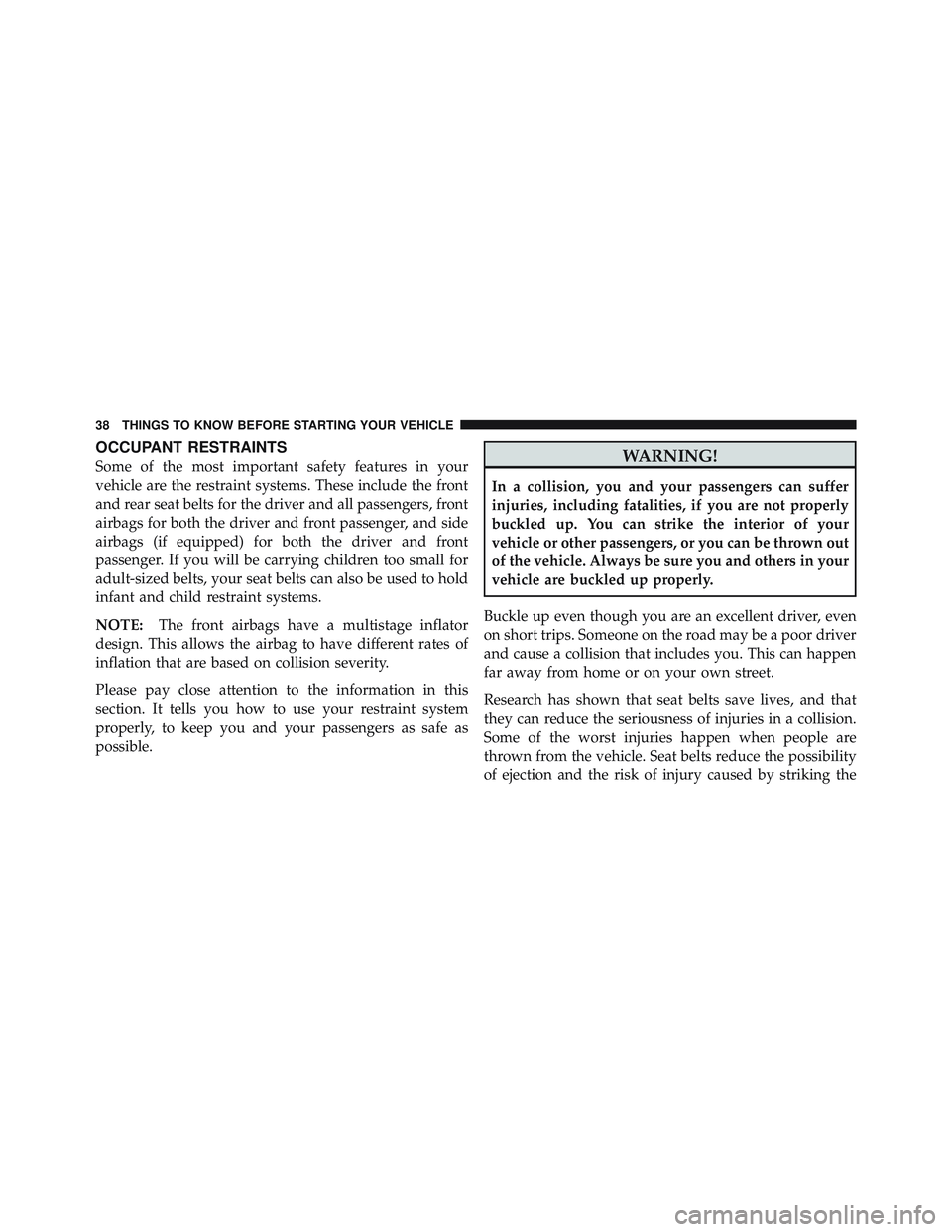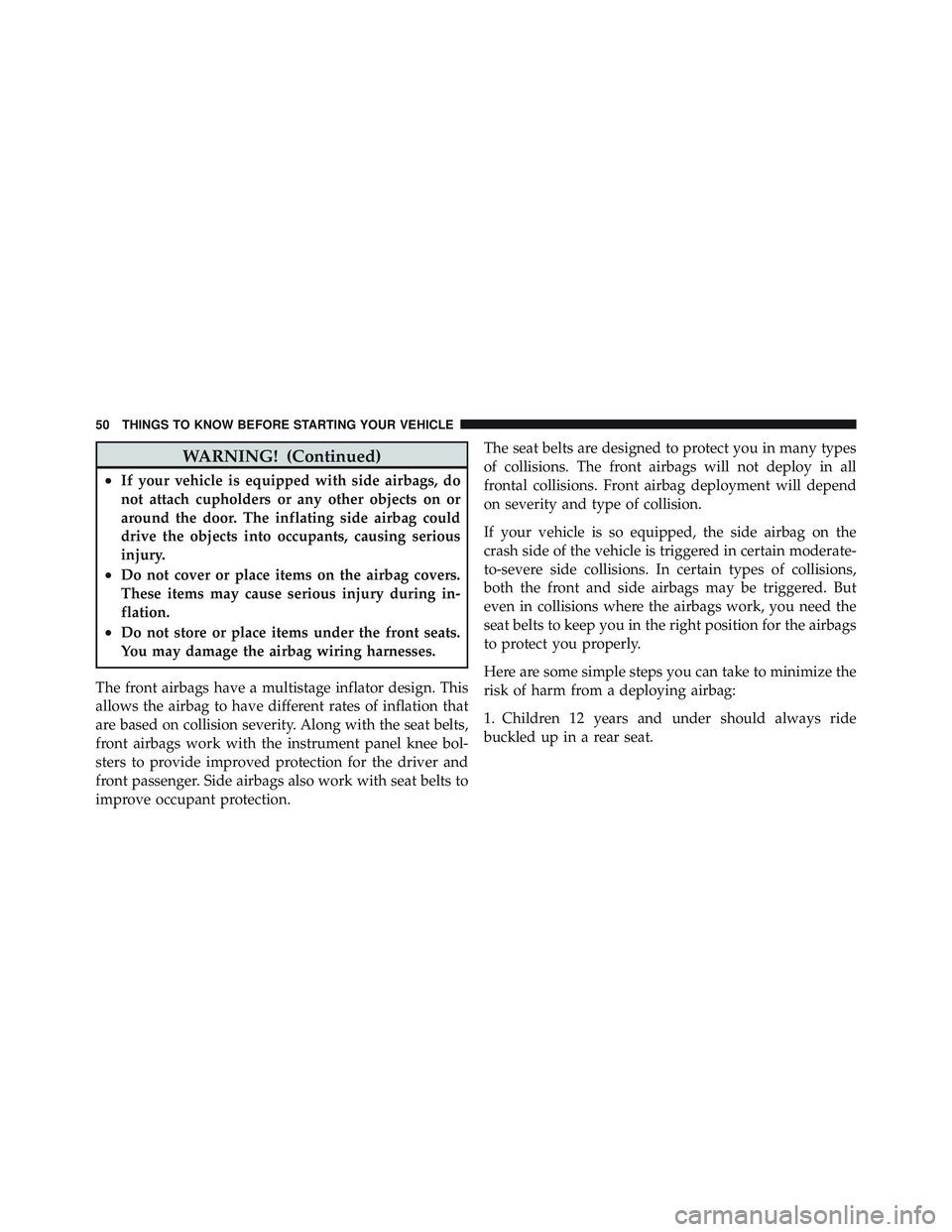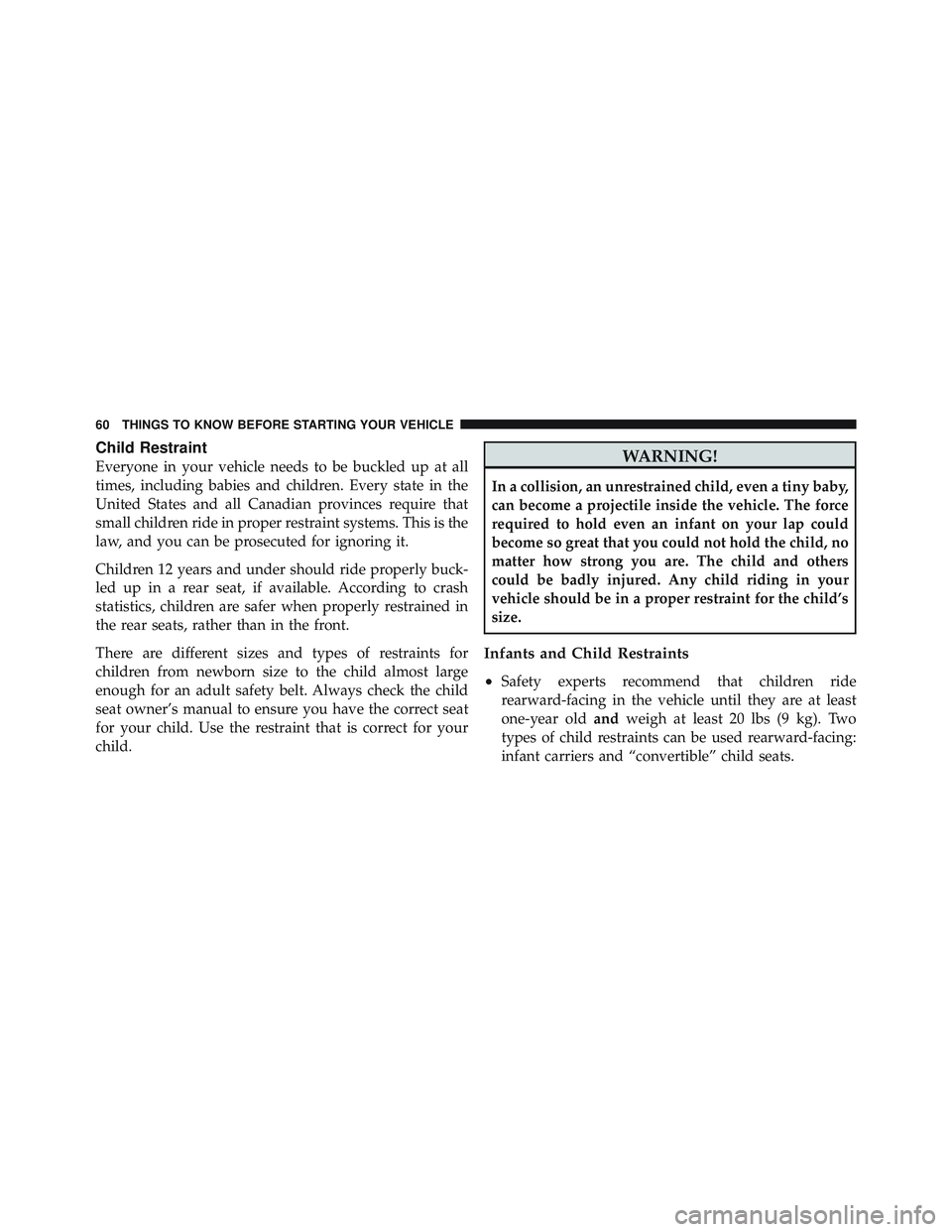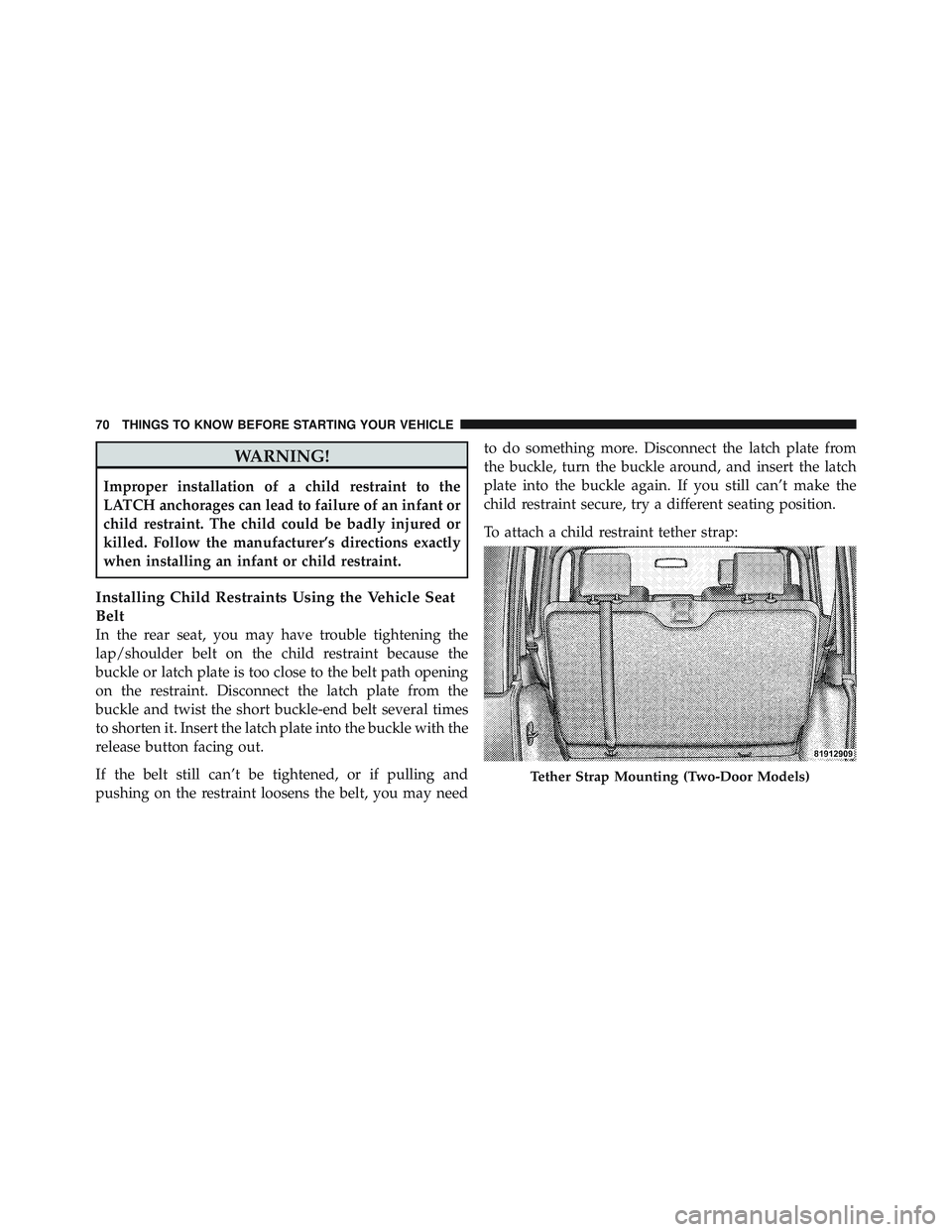child seat JEEP WRANGLER UNLIMITED 2009 Owners Manual
[x] Cancel search | Manufacturer: JEEP, Model Year: 2009, Model line: WRANGLER UNLIMITED, Model: JEEP WRANGLER UNLIMITED 2009Pages: 496, PDF Size: 14.26 MB
Page 40 of 496

OCCUPANT RESTRAINTS
Some of the most important safety features in your
vehicle are the restraint systems. These include the front
and rear seat belts for the driver and all passengers, front
airbags for both the driver and front passenger, and side
airbags (if equipped) for both the driver and front
passenger. If you will be carrying children too small for
adult-sized belts, your seat belts can also be used to hold
infant and child restraint systems.
NOTE:The front airbags have a multistage inflator
design. This allows the airbag to have different rates of
inflation that are based on collision severity.
Please pay close attention to the information in this
section. It tells you how to use your restraint system
properly, to keep you and your passengers as safe as
possible.
Page 52 of 496

WARNING! (Continued)
•If your vehicle is equipped with side airbags, do
not attach cupholders or any other objects on or
around the door. The inflating side airbag could
drive the objects into occupants, causing serious
injury.
•Do not cover or place items on the airbag covers.
These items may cause serious injury during in-
flation.
•Do not store or place items under the front seats.
You may damage the airbag wiring harnesses.
The front airbags have a multistage inflator design. This
allows the airbag to have different rates of inflation that
are based on collision severity. Along with the seat belts,
front airbags work with the instrument panel knee bol-
sters to provide improved protection for the driver and
front passenger. Side airbags also work with seat belts to
improve occupant protection. The seat belts are designed to protect you in many types
of collisions. The front airbags will not deploy in all
frontal collisions. Front airbag deployment will depend
on severity and type of collision.
If your vehicle is so equipped, the side airbag on the
crash side of the vehicle is triggered in certain moderate-
to-severe side collisions. In certain types of collisions,
both the front and side airbags may be triggered. But
even in collisions where the airbags work, you need the
seat belts to keep you in the right position for the airbags
to protect you properly.
Here are some simple steps you can take to minimize the
risk of harm from a deploying airbag:
1. Children 12 years and under should always ride
buckled up in a rear seat.
50 THINGS TO KNOW BEFORE STARTING YOUR VEHICLE
Page 62 of 496

Child Restraint
Everyone in your vehicle needs to be buckled up at all
times, including babies and children. Every state in the
United States and all Canadian provinces require that
small children ride in proper restraint systems. This is the
law, and you can be prosecuted for ignoring it.
Children 12 years and under should ride properly buck-
led up in a rear seat, if available. According to crash
statistics, children are safer when properly restrained in
the rear seats, rather than in the front.
There are different sizes and types of restraints for
children from newborn size to the child almost large
enough for an adult safety belt. Always check the child
seat owner’s manual to ensure you have the correct seat
for your child. Use the restraint that is correct for your
child.
Page 72 of 496

WARNING!
Improper installation of a child restraint to the
LATCH anchorages can lead to failure of an infant or
child restraint. The child could be badly injured or
killed. Follow the manufacturer’s directions exactly
when installing an infant or child restraint.
Installing Child Restraints Using the Vehicle Seat
Belt
In the rear seat, you may have trouble tightening the
lap/shoulder belt on the child restraint because the
buckle or latch plate is too close to the belt path opening
on the restraint. Disconnect the latch plate from the
buckle and twist the short buckle-end belt several times
to shorten it. Insert the latch plate into the buckle with the
release button facing out.
If the belt still can’t be tightened, or if pulling and
pushing on the restraint loosens the belt, you may needto do something more. Disconnect the latch plate from
the buckle, turn the buckle around, and insert the latch
plate into the buckle again. If you still can’t make the
child restraint secure, try a different seating position.
To attach a child restraint tether strap: